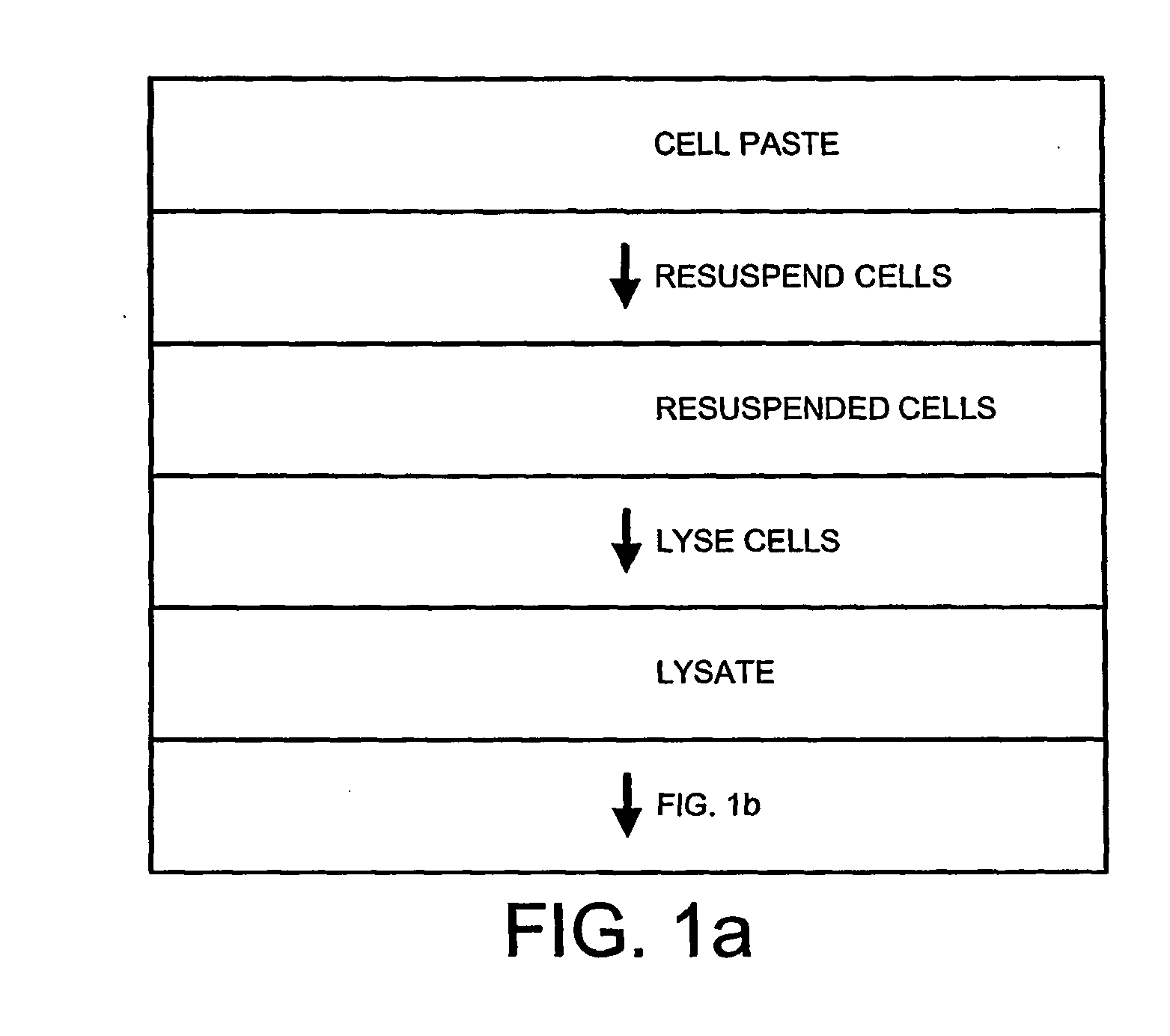Method of separating extra-chromosonal dna from other cellular components
a technology of cellular components and dna, applied in the field of extrachromosomal dna, can solve the problems of inability to generate the quantities of material needed for biopharmaceutical applications, inability to meet the requirements of small amounts of research material, and inability to assemble the first reaction of the material derived from bovine sources,
- Summary
- Abstract
- Description
- Claims
- Application Information
AI Technical Summary
Benefits of technology
Problems solved by technology
Method used
Image
Examples
example 2
Effect of Ionic Strength Part 2
[0171] A further experiment was conducted to determine the significance of the ionic strength on RNA removal. Three Tris buffers of different ionic strengths were compared. The Tris buffers all had a pH of 7.5, but were of varying concentrations as set out below:
[0172] 500 mM (conductivity 25.3)
[0173] 100 mM (conductivity 6.89)
[0174] 10 mM (conductivity 0.33)
[0175] A comparison of the HPLC traces (lysate versus retentate pool) demonstrated that the lower the ionic strength the greater the RNA removal (FIGS. 3a to 3f).
example 3
Effect of pH
[0176] Having deduced that ionic strength affected RNA removal the effect of pH on RNA removal was investigated. The investigation was made against a 10 mM Tris buffer at a pH of 6, 7.5 and 9. Again by comparing HPLC traces (lysate versus retentate pool) it was determined that a pH between 7.5 and 9 gave better RNA clearance than a pH of 6 although the results at pH 9 were no better than at pH 7.5 (FIGS. 4a to 4d and FIGS. 3e and 3f)
example 4
Effect of Ionic Strength on Permeate Flux and Trans Membrane Pressure
[0177] As well as affecting RNA clearance it was noted that the permeate flux and trans membrane pressure (TMP) was affected by the ionic concentration of the diafiltration buffer. Thus whilst the permeate flux was generally in the order of 40 L / m.sup.2 / h at the commencement of diafiltration it altered with increasing volume exchanges. In the case of the 500 mM buffer the permeate flux dropped to about 30 L / m.sup.2 / h whilst for the 100 mM buffer it increased to about 70 L / m.sup.2 / h and for the 10 mM buffer it increased to about 140 L / m.sup.2 h. These finding are significant in that they demonstrate that processing can be conducted at faster speeds for the lower ionic strength buffers; by as much as a factor of 5. The results are shown graphically in FIG. 5.
[0178] Also the TMP dropped from a starting pressure of about 20 to about 17 in the case of the 100 mM buffer and to about 10 in the case of the 10 mM buffer. Th...
PUM
| Property | Measurement | Unit |
|---|---|---|
| Linear density | aaaaa | aaaaa |
| Linear density | aaaaa | aaaaa |
| Percent by mass | aaaaa | aaaaa |
Abstract
Description
Claims
Application Information
 Login to View More
Login to View More - R&D
- Intellectual Property
- Life Sciences
- Materials
- Tech Scout
- Unparalleled Data Quality
- Higher Quality Content
- 60% Fewer Hallucinations
Browse by: Latest US Patents, China's latest patents, Technical Efficacy Thesaurus, Application Domain, Technology Topic, Popular Technical Reports.
© 2025 PatSnap. All rights reserved.Legal|Privacy policy|Modern Slavery Act Transparency Statement|Sitemap|About US| Contact US: help@patsnap.com



